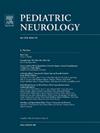Effectiveness of Vagus Nerve Stimulation in Patients With Dravet Syndrome: A Case Series and Meta-Analysis
IF 3.2
3区 医学
Q2 CLINICAL NEUROLOGY
引用次数: 0
Abstract
Objective
This case series and meta-analysis aimed to determine effectiveness of vagus nerve stimulation (VNS) in patients with Dravet syndrome (DS).
Methods
All patients with DS and VNS were included in this case series. For meta-analysis, a literature search of electronic databases PubMed, Cochrane, and Embase was performed. Critical Appraisal Tools were used to evaluate study quality. Responder (>50% seizure reduction from baseline) rate was the main outcome, which was quantitatively synthesized at specific follow-up points (at least six months). Subgroup analyses were conducted based on duration of epilepsy, proportion of males, and duration of follow-up. Additionally, cognitive and behavior changes were analyzed as secondary outcomes in case series only.
Results
Of the case series, two of four patients responded. In the meta-analysis, of 1183 studies retrieved in the initial search, nine comprising 92 patients were included. The overall responder rate reached 0.55 (95% confidence interval [CI] 0.45 to 0.64). Subgroup analyses were performed. The responder rates in groups with duration of epilepsy groups greater than or equal to six years and less than six years were 0.38 (95% CI 0.14 to 0.61) and 0.65 (95% CI 0.47 to 0.82) (P = 0.07). No heterogeneity was found in responder rate in groups with different proportion of males (>50%, ≤50%) or two groups with different duration of follow-up (greater than or equal to three years, less than three years) (P > 0.1).
Conclusions
VNS was an effective option in patients with DS who failed to respond to medications. Patients with short duration of epilepsy (less than six years) were prone to respond to VNS.
求助全文
约1分钟内获得全文
求助全文
来源期刊

Pediatric neurology
医学-临床神经学
CiteScore
4.80
自引率
2.60%
发文量
176
审稿时长
78 days
期刊介绍:
Pediatric Neurology publishes timely peer-reviewed clinical and research articles covering all aspects of the developing nervous system.
Pediatric Neurology features up-to-the-minute publication of the latest advances in the diagnosis, management, and treatment of pediatric neurologic disorders. The journal''s editor, E. Steve Roach, in conjunction with the team of Associate Editors, heads an internationally recognized editorial board, ensuring the most authoritative and extensive coverage of the field. Among the topics covered are: epilepsy, mitochondrial diseases, congenital malformations, chromosomopathies, peripheral neuropathies, perinatal and childhood stroke, cerebral palsy, as well as other diseases affecting the developing nervous system.
 求助内容:
求助内容: 应助结果提醒方式:
应助结果提醒方式:


